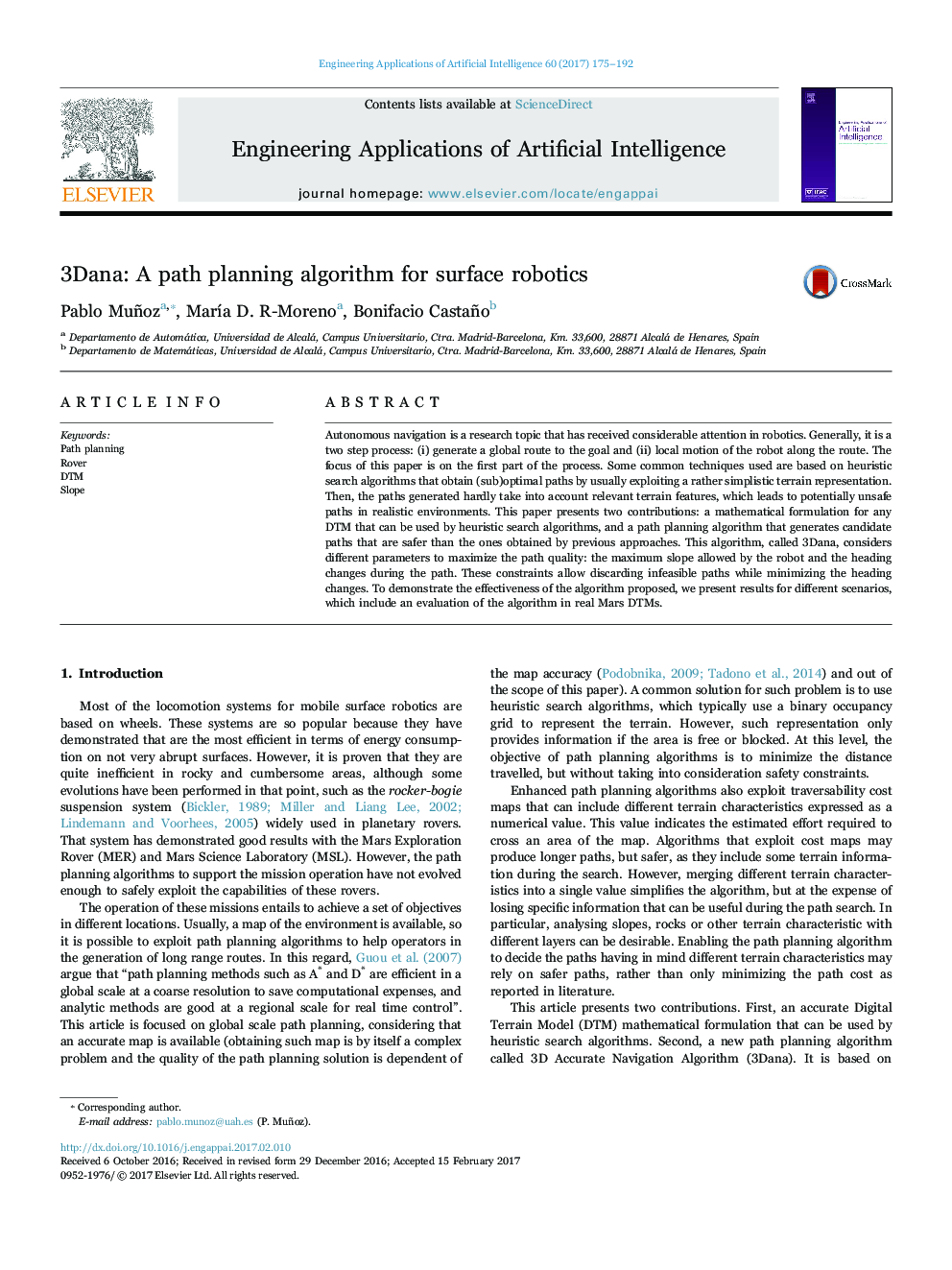| Article ID | Journal | Published Year | Pages | File Type |
|---|---|---|---|---|
| 4942724 | Engineering Applications of Artificial Intelligence | 2017 | 18 Pages |
Abstract
Autonomous navigation is a research topic that has received considerable attention in robotics. Generally, it is a two step process: (i) generate a global route to the goal and (ii) local motion of the robot along the route. The focus of this paper is on the first part of the process. Some common techniques used are based on heuristic search algorithms that obtain (sub)optimal paths by usually exploiting a rather simplistic terrain representation. Then, the paths generated hardly take into account relevant terrain features, which leads to potentially unsafe paths in realistic environments. This paper presents two contributions: a mathematical formulation for any DTM that can be used by heuristic search algorithms, and a path planning algorithm that generates candidate paths that are safer than the ones obtained by previous approaches. This algorithm, called 3Dana, considers different parameters to maximize the path quality: the maximum slope allowed by the robot and the heading changes during the path. These constraints allow discarding infeasible paths while minimizing the heading changes. To demonstrate the effectiveness of the algorithm proposed, we present results for different scenarios, which include an evaluation of the algorithm in real Mars DTMs.
Keywords
Related Topics
Physical Sciences and Engineering
Computer Science
Artificial Intelligence
Authors
Pablo Muñoz, MarÃa D. R-Moreno, Bonifacio Castaño,
